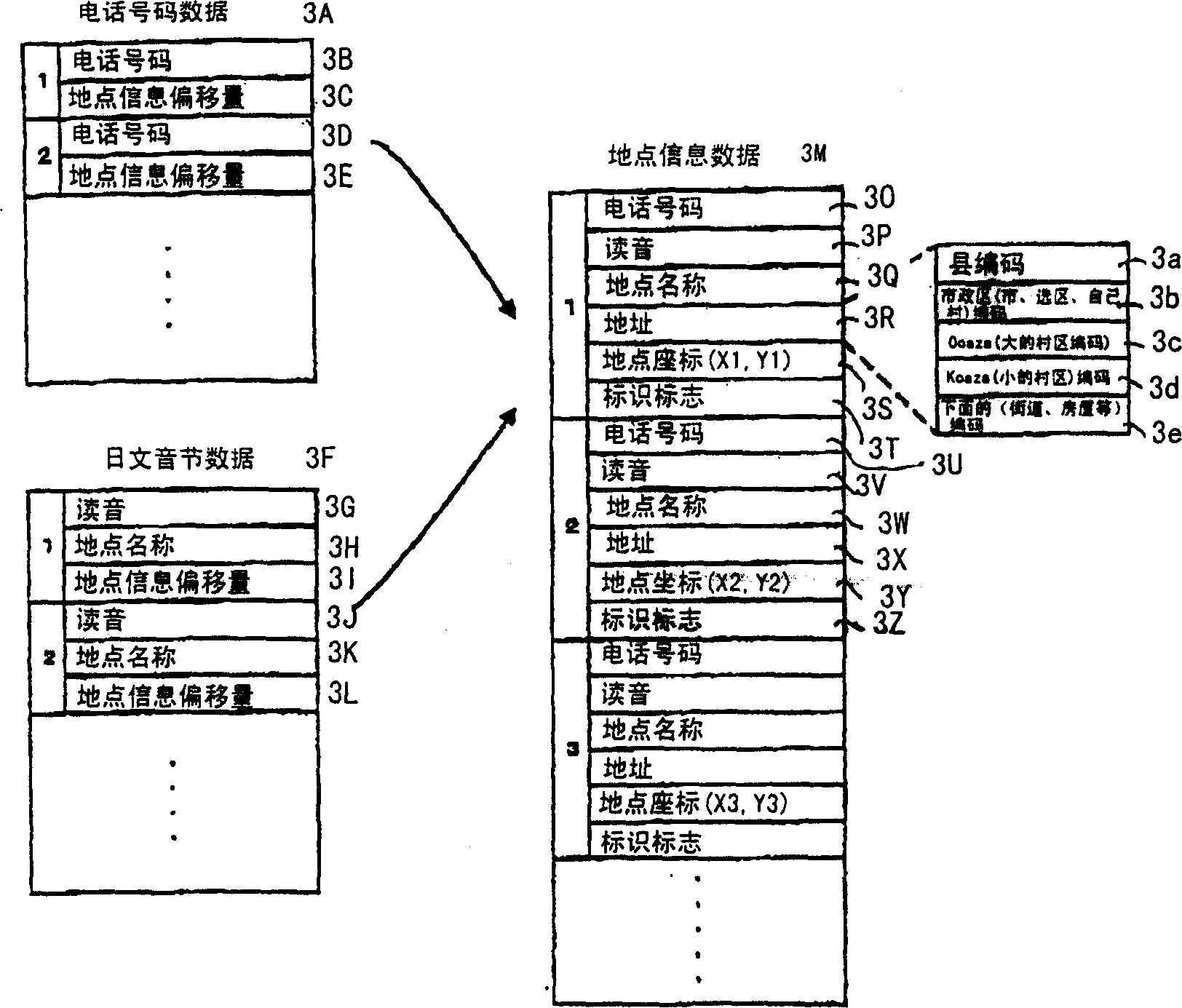Address search and output system using telephone numbers
A technology of using telephone numbers and telephone numbers, applied in the field of location retrieval and output systems using telephone numbers, can solve the problems of not setting a nameplate, users unable to identify whether the location is the location they require, inconvenience and the like
- Summary
- Abstract
- Description
- Claims
- Application Information
AI Technical Summary
Problems solved by technology
Method used
Image
Examples
Embodiment Construction
[0028] The following are embodiments of the present invention, which will be described with reference to the accompanying drawings. figure 1 It is a diagram according to an embodiment of a place retrieval output system with a telephone number of the present invention, which includes an input device 1 for inputting information about a route guide; a current location detector 2 for detecting information about a current location of a vehicle The information storage device 3 is used to store necessary display / sound guide data, programs (application and / or OS) etc. for the route guide; the central processing unit 4 is used for performing route retrieval processing and route guide as a navigation processing device. display / sound guide and also the control of the whole system; the information transmitter / receiver 5 is used to transmit and receive information about the vehicle when traveling, such as road information or traffic flow information, and is used to detect information about ...
PUM
 Login to View More
Login to View More Abstract
Description
Claims
Application Information
 Login to View More
Login to View More - Generate Ideas
- Intellectual Property
- Life Sciences
- Materials
- Tech Scout
- Unparalleled Data Quality
- Higher Quality Content
- 60% Fewer Hallucinations
Browse by: Latest US Patents, China's latest patents, Technical Efficacy Thesaurus, Application Domain, Technology Topic, Popular Technical Reports.
© 2025 PatSnap. All rights reserved.Legal|Privacy policy|Modern Slavery Act Transparency Statement|Sitemap|About US| Contact US: help@patsnap.com



